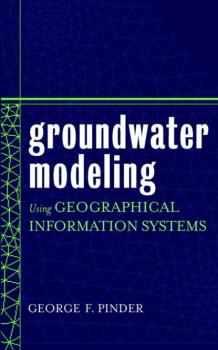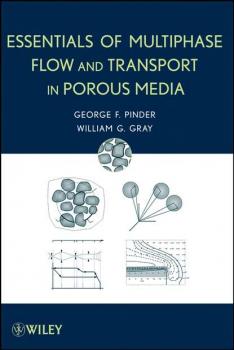ТОП просматриваемых книг сайта:
George Pinder F.
Список книг автора George Pinder F.Аннотация
Cutting-edge techniques for groundwater modeling using GIS technology Groundwater Modeling Using Geographical Information Systems covers fundamental information on flow and mass transport modeling and demonstrates how GIS technology makes these models and analyses more accurate than ever before. GIS technology allows for swift organization, quantification, and interpretation of large quantities of geohydrological data with computer accuracy and minimal risk of human error. This book's companion Web site provides the Princeton Transport Code, as well as the plug-in extensions required to interface this code with the Argus ONE numerical environment software enclosed with this book. Plug-in extensions for MODFLOW and MT3D computer codes can be found at the Argus ONE Web site (www.argusint.com). The process for using the Geographic Modeling Approach (GMA) to model groundwater flow and transport is demonstrated step by step with a field example from Tucson, Arizona. The GMA is composed of the Argus ONE Geographic Information Modeling system and the Princeton Transport Code groundwater flow and transport model, interfaced through the plug-in extension available on Argus ONE. Enhanced with more than 150 illustrations and screen captures, Groundwater Modeling Using Geographical Information Systems is a fundamental book for civil engineers, hydrologists, environmental engineers, geologists, and students in these fields, as well as software engineers working on GIS applications and environmental attorneys and regulators. When used in combination with the free modeling software, this book provides an excellent student text.
Аннотация
Learn the fundamental concepts that underlie the physics of multiphase flow and transport in porous media with the information in Essentials of Multiphase Flow in Porous Media, which demonstrates the mathematical-physical ways to express and address multiphase flow problems. Find a logical, step-by-step introduction to everything from the simple concepts to the advanced equations useful for addressing real-world problems like infiltration, groundwater contamination, and movement of non-aqueous phase liquids. Discover and apply the governing equations for application to these and other problems in light of the physics that influence system behavior.
Аннотация
With an emphasis on methodology, this reference provides a comprehensive examination of water movement as well as the movement of various pollutants in the earth's subsurface. The multidisciplinary approach integrates earth science, fluid mechanics, mathematics, statistics, and chemistry. Ideal for both professionals and students, this is a practical guide to the practices, procedures, and rules for dealing with groundwater.
Numerical Methods for Solving Partial Differential Equations. A Comprehensive Introduction for Scientists and Engineers - George Pinder F.
Аннотация
A comprehensive guide to numerical methods for simulating physical-chemical systems This book offers a systematic, highly accessible presentation of numerical methods used to simulate the behavior of physical-chemical systems. Unlike most books on the subject, it focuses on methodology rather than specific applications. Written for students and professionals across an array of scientific and engineering disciplines and with varying levels of experience with applied mathematics, it provides comprehensive descriptions of numerical methods without requiring an advanced mathematical background. Based on its author’s more than forty years of experience teaching numerical methods to engineering students, Numerical Methods for Solving Partial Differential Equations presents the fundamentals of all of the commonly used numerical methods for solving differential equations at a level appropriate for advanced undergraduates and first-year graduate students in science and engineering. Throughout, elementary examples show how numerical methods are used to solve generic versions of equations that arise in many scientific and engineering disciplines. In writing it, the author took pains to ensure that no assumptions were made about the background discipline of the reader. Covers the spectrum of numerical methods that are used to simulate the behavior of physical-chemical systems that occur in science and engineering Written by a professor of engineering with more than forty years of experience teaching numerical methods to engineers Requires only elementary knowledge of differential equations and matrix algebra to master the material Designed to teach students to understand, appreciate and apply the basic mathematics and equations on which Mathcad and similar commercial software packages are based Comprehensive yet accessible to readers with limited mathematical knowledge, Numerical Methods for Solving Partial Differential Equations is an excellent text for advanced undergraduates and first-year graduate students in the sciences and engineering. It is also a valuable working reference for professionals in engineering, physics, chemistry, computer science, and applied mathematics.




